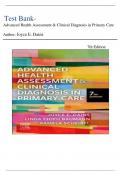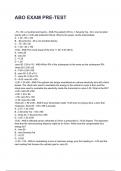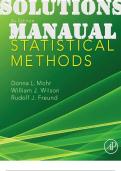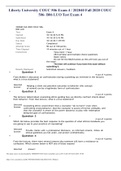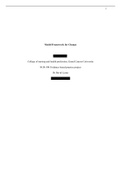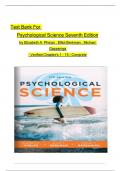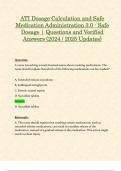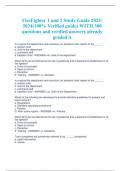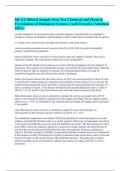Exam (elaborations)
Test Bank- Advanced Health Assessment & Clinical Diagnosis in Primary Care 7th Edition ( Joyce E. Dains , 2024) Newest Edition
Test Bank- Advanced Health Assessment & Clinical Diagnosis in Primary Care 7th Edition ( Joyce E. Dains , 2024) Newest Edition
[Show more]
